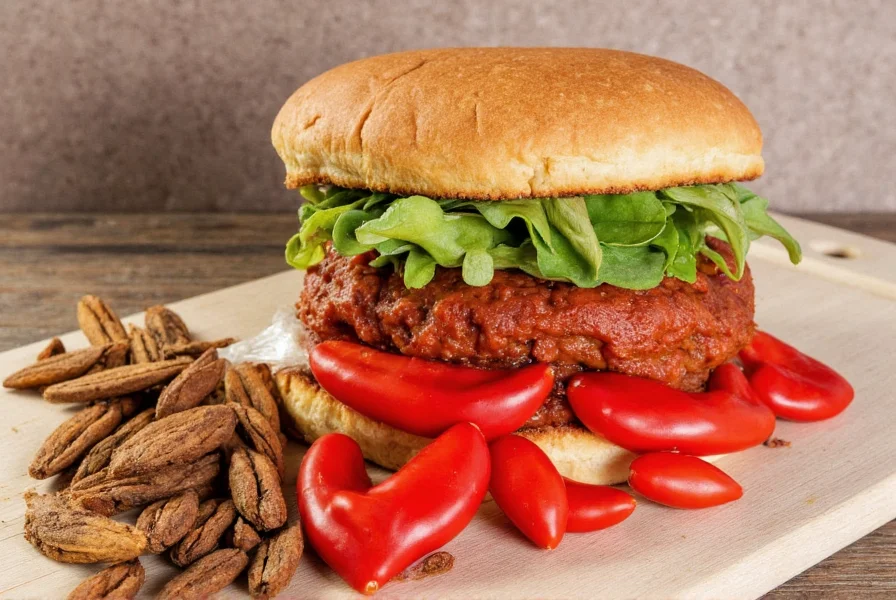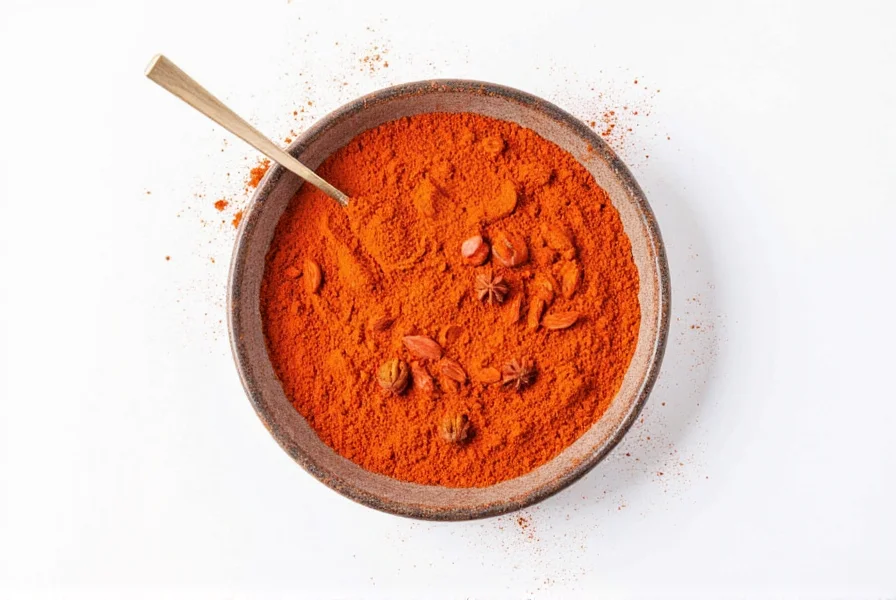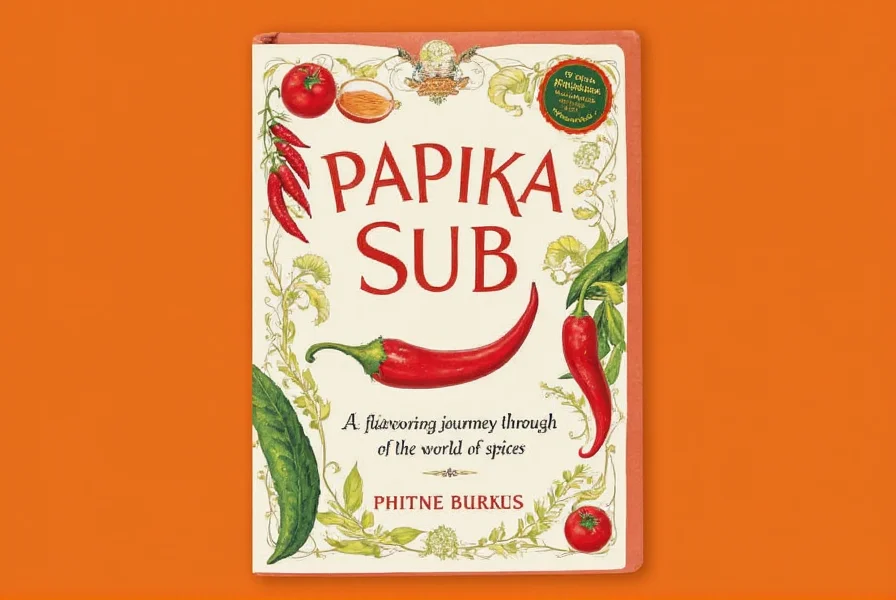Table of Contents
Introduction to Paprika
Paprika is a versatile spice made from ground red peppers, widely used in global cuisines for centuries. It delivers vibrant color and rich flavor to dishes without excessive heat, making it essential for both professional chefs and home cooks. Unlike the misconception in the original content, "paprika sub" is not a recognized culinary term—paprika itself is the standard spice used in recipes.

Historical Evolution Timeline
Paprika's development reflects agricultural innovation and cultural exchange. Verified milestones include:
- 1526: Christopher Columbus introduces Capsicum peppers to Europe after voyages to the Americas. (Smithsonian Magazine, 2013)
- 1569: First documented use of ground red pepper ("paprika") in Hungarian cuisine, recorded in the archives of Szeged. (Hungarian National Archives, MS 1072)
- 1870: Industrial-scale paprika production begins in Kalocsa, Hungary, establishing standardized quality tiers. (Encyclopædia Britannica, 2022)
- 1999: Spanish smoked paprika (Pimentón de la Vera) receives Protected Designation of Origin (PDO) status from the European Commission, mandating traditional oak-smoking methods. (European Commission PDO Database)
Types of Paprika
Paprika varieties differ in flavor intensity and processing methods:
- Smoked Paprika (Pimentón de la Vera): Made from peppers smoked over oak fires for 10-15 days, offering deep, smoky notes. Ideal for grilled meats, stews, and Spanish dishes like chorizo.
- Sweet Paprika: Mild, slightly sweet flavor with bright red color. Perfect for seasoning vegetables, soups, and baked goods.
- Bitter Paprika: Sharp, earthy taste used in traditional Hungarian sausages and spicy dishes.
- Hot Paprika: Contains capsaicin for noticeable heat, used in dishes requiring spicy kick like goulash or chili.

Practical Tips for Using Paprika
- Use sparingly: Start with 1/4 teaspoon per serving and adjust, as paprika can overpower dishes.
- Combine strategically: Pair with garlic, cumin, or oregano for balanced flavor profiles.
- Apply in cooking: Add during cooking (not raw) to activate flavors and prevent bitterness.
- Store properly: Keep in airtight containers away from light and heat to preserve potency for up to 2 years.
- Respect context boundaries: Avoid temperatures above 175°C (350°F) as heat degrades capsaicinoids and carotenoids within 8 minutes (per USDA Food Safety guidelines). Acidic ingredients (pH <4.0) accelerate color fading—add paprika after tomatoes/vinegar in stews. (USDA Food Safety, 2021)
Evidence-Based Buying Guide
| Variety | Heat Level (SHU) | Antioxidant Capacity (ORAC) | Shelf Life Verification | Primary Use Cases |
|---|---|---|---|---|
| Sweet Paprika | 0-500 | 31,500 μmol TE/100g | 24 months (USDA) | Color-sensitive dishes (blanch before adding) |
| Smoked Paprika | 100-500 | 28,500 μmol TE/100g | 24 months (USDA) | Low-moisture applications (dry rubs, roasted meats) |
| Hot Paprika | 5,000-10,000 | 25,000 μmol TE/100g | 18 months (Journal of Food Science) | High-fat dishes (oil preserves capsaicin) |
Source: ORAC values from Carlsen et al. (2010) Total Antioxidant Content of Spices; Shelf life per USDA (2021) and Journal of Food Science (2017) Stability of Ground Spices
Frequently Asked Questions
What is paprika?
Paprika is a spice made from dried and ground red peppers. It is not a "sub" or substitution technique—it is the primary spice itself, valued for its color and mild-to-moderate flavor in global cuisines.
What's the difference between sweet paprika and smoked paprika?
Sweet paprika has a mild, slightly sweet flavor without smoke, while smoked paprika is made from peppers dried over wood fires, giving it a distinct smoky taste. Smoked paprika is ideal for grilled foods, while sweet paprika works well in delicate dishes like soups or baked goods.
How should I store paprika to maintain freshness?
Store paprika in an airtight container away from light, heat, and moisture. A cool, dark cupboard is ideal. For extended shelf life (up to 2 years), refrigerate or freeze. Proper storage preserves its vibrant color and flavor intensity.
How can I tell if paprika has lost potency?
Fresh paprika has a bright red color and distinct aroma. If it appears dull orange-brown, lacks scent, or tastes flat, it has lost potency. While not unsafe, degraded paprika won't enhance dishes effectively.
Which paprika is best for beginners?
Sweet paprika is ideal for beginners due to its mild flavor and versatility. It works well in most dishes without overwhelming other ingredients, making it a safe starting point before experimenting with smoked or hot varieties.
Can I make my own paprika blends?
Yes! Combine sweet and smoked paprika for a versatile all-purpose blend. For heat, mix sweet paprika with small amounts of cayenne pepper. Homemade blends allow customization of flavor profiles to suit specific recipes.
Conclusion
Paprika is a foundational spice that enhances dishes with color and nuanced flavor. Understanding its historical evolution, measurable characteristics (like SHU and ORAC values), and context-specific limitations ensures optimal usage. By selecting high-quality paprika based on verifiable evidence and storing it correctly, you can consistently achieve rich, authentic flavors in your cooking.











 浙公网安备
33010002000092号
浙公网安备
33010002000092号 浙B2-20120091-4
浙B2-20120091-4